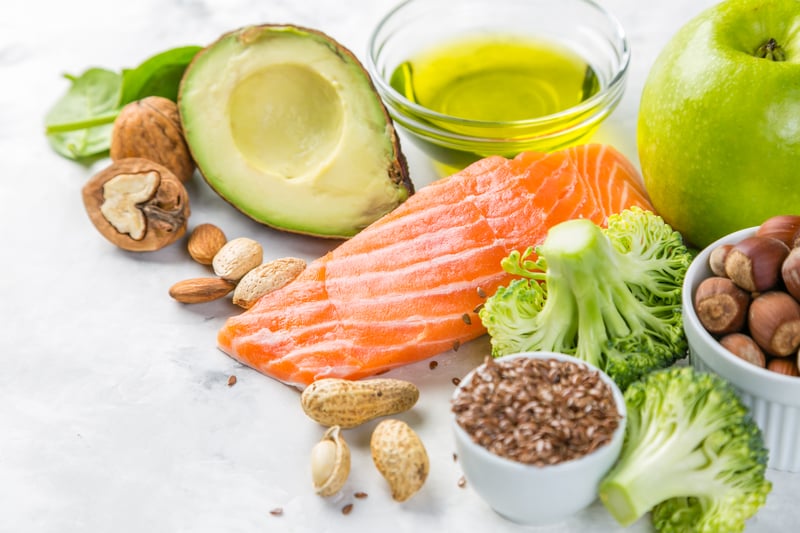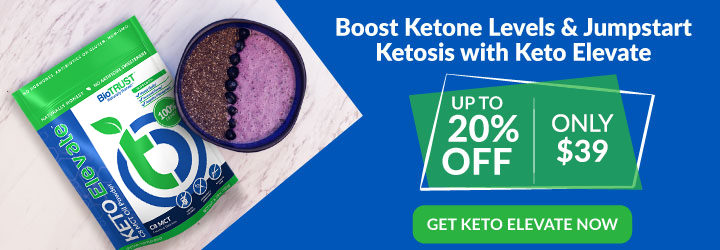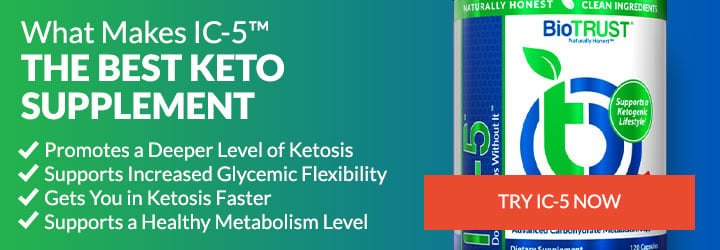How to Get in Ketosis in Only 24 Hours (Simple as 1 – 2 – 3)

Getting into ketosis is not just hype. It’s an evolutionary advantage. In fact, at a time when food wasn’t omnipresent like it is today, individuals whose brains and bodies functioned well in a fasted state (i.e., in ketosis) were successful in acquiring food, enabling their survival and reproduction.
Being able to shift into a state of nutritional ketosis—at least part of the time and with some frequency—may profoundly influence the brain and the body well beyond weight management (although that is one of the potential benefits). For example, it appears shifting into ketosis may enhance both cognitive and physical performance. It may also favorably influence a variety of pathways related to inflammation, oxidative stress, anti-aging, mitochondrial biogenesis, and more.
Whether you’re looking on how to get in ketosis (after a cheat day, for example), jumpstart your ketogenic diet, take a deeper dive into ketosis, or dabble with intermittent ketosis, here’s your quick-start guide on how to get in ketosis in 24 hours with 3 simple steps.
How to Get in Ketosis in 24 Hours
Step 1: Fasting
Did you know the ketogenic diet was initially formulated to mimic the physiological state of fasting? It’s true. Dr. Russell Wilder, at the Mayo Clinic, was the first to recognize a “ketone-producing diet” shifted the body into a state that mimicked fasting without starvation. He implemented it (very successfully, in fact) as a treatment for drug-resistant epilepsy back in the 1920s.
Without getting too thick into the weeds, the crux of it is that fasting is the most powerful tool to “flip the metabolic switch.” This is what researchers define as “the body’s preferential shift from use of glucose to fatty acids and fatty-acid derived ketones.” 1 Put differently, fasting switches the metabolism from fat-storing mode into full-fledged fat-burning mode. It also ramps up the body’s production of fat-derived ketones (i.e., ketogenesis).
As you’ll see in the image below, the “flip” of the metabolic switch typically occurs about 12 – 36 hours into fasting (after you stop eating). Of course, this can vary considerably depending on diet composition, energy expenditure, and exercise during the fast. 1

While there can be considerable variances, the onset of the metabolic switch—when the body begins to produce and rely more heavily on ketones—occurs roughly around 12 hours into a fast. This coincides with the point of negative energy balance at which liver glycogen stores are depleted and fatty acids are mobilized. 1
A key point to note here is that depletion of liver glycogen stores is important to ramping up the production of ketones. Under normal conditions, people typically eat three or more times per day. And each time they eat, liver glycogen stores are at least partially replenished. Liver glycogen, generally speaking, provides 700 – 900 calories of glucose, an amount that will typically last 10 – 14 hours in individuals who are not exercising. 3

Step #2: Exercise
I like to think of exercise as a fasting accelerant. That is, exercise accelerates the depletion of the body’s liver glycogen stores, which refers to carbohydrate stored in the liver. Depletion of liver glycogen is one of the key signals to the body to ramp up ketogenesis. In other words, exercise hastens the rate the body flips the metabolic switch (from glucose to fat and ketones). 3
Simply put, fasting PLUS exercise is a formidable combination to induce nutritional ketosis.
The cool thing is when you add intense and/or prolonged exercise to fasting, the metabolic switch gets flipped on sooner and/or more deeply. For example, if you exercise 8 – 10 hours into a fast, you’re likely to flip the switch earlier than expected. Or, if you exercise 12 – 14 hours into a fast, you’re likely to cause the body to produce higher levels of ketones.
More research is needed to give us added insight into the proper combinations, types, and timing of exercise and intermittent fasting. But generally speaking, many people find low-intensity activity early in the fast (such as taking a walk or doing some light yoga) along with plenty of physical activity throughout the fast seems to work well and be well tolerated.
Believe it or not, most people find more intense activity (for example, strength training and/or interval training) tends to be better tolerated later into fasting (e.g., after 10 – 12 hours), preferably in the afternoon/early evening, which tends to align with the body’s natural circadian rhythms for coordination, cardiovascular endurance, and muscular strength. 4
Overall, the research is clear that ketone bodies are an important fuel source during exercise. And levels of ketones are markedly elevated during the post-exercise recovery period. Even more, the ability to efficiently and effectively use ketone bodies is higher in exercise-trained skeletal muscle. 5 Yet, when it comes to combining fasting and exercise, this may require some experimentation, as individual differences apply—not just between, but also within, individuals.
Step #3: Supplements
When it comes to supplements for how to get in ketosis, there are two primary categories:
- Supplements that directly increase levels of ketones; and
- Supplements that indirectly promote a state of ketosis.
You may notice the emphasis on direct vs. indirect mechanisms, but there’s some additional nuance on how to get in ketosis in 24 hours. Supplements that directly increase levels of ketones don’t necessarily promote a state of nutritional ketosis. On the other hand, supplements in the latter category activate mechanisms that can more powerfully stimulate your body’s own production of ketones.
That’s not to say one category is better or more effective across the board. They both have advantages, and they are not mutually exclusive. So, let’s dig in.
Supplements that directly increase levels of ketones include:
- Exogenous ketones
If your question is simply “how to get in ketosis in 24 hours”, then supplements that directly increase levels of ketones are a powerful means to that end. As ketone researcher Dr. Brianna Stubbs has said, “Though nuanced, there’s a big difference between being in a ‘ketogenic’ body and a body ‘in a state of ketosis.’”
In the second category of supplements, you have ingredients that may work on a number of different pathways to promote a state of ketosis. For example, many of these keto boosters help by reducing levels of glucose, insulin, and/or insulin resistance. Along these lines, there tends to be an inverse relationship between blood glucose and levels of ketones. In other words, decreased glucose availability tends to coincide with elevated ketones. In fact, researchers have established a Glucose Ketone Index based on this physiological premise that sets out to predict the therapeutic effect of a ketogenic diet. 6
In this category of supplements, you have ingredients such as:
- Berberine
- Cinnamon
- Quercetin
- Resveratrol
- Bitter melon
One product I’ve seen work very well is IC-5, which combines berberine, cinnamon bark extract, and several other blood glucose support nutrients.
Now, if your goal is to get into ketosis in 24 hours and maintain a state of nutritional ketosis for any meaningful period of time, then a combination of both categories of supplements along with fasting and exercise is surely the most powerful, surefire way to said target.
How to Get in Ketosis in Only 24 Hours
Being able to tap into ketosis is not just some passing fad. It’s an evolutionary advantage, which the vast majority of folks have lost touch with due to the omnipresence of readily available foods. What’s more, the benefits of ketosis seem to vastly transcend weight management. In fact, there’s compelling evidence to suggest that the majority of people should be challenging their metabolism to dabble in ketosis at least part of the time.
So, whether you’re looking to get back into ketosis (after a cheat day, for example), jumpstart your ketogenic diet, take a deeper dive into ketosis, or experiment with intermittent ketosis, harness the power of these 3 simple steps to get in ketosis in 24 hours.







